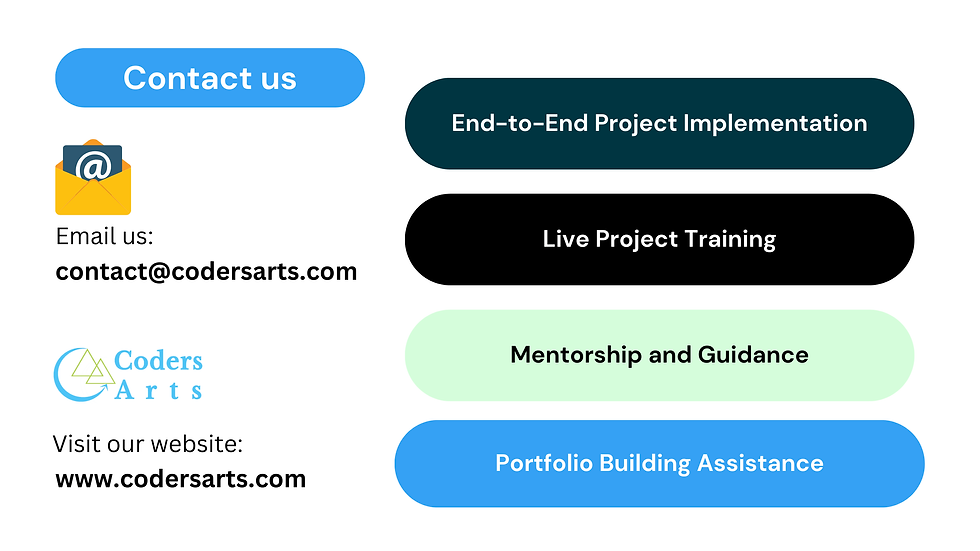LLM Output Analysis and Error Evaluation - Get AI Assignment Help
- Codersarts
- Oct 27, 2024
- 3 min read
This assignment aims to develop hands-on experience in fact-checking outputs from Large Language Models (LLMs)and analyzing model accuracy. Using Python and Hugging Face tools, you will implement word overlap and entailment-based methods for fact verification. This practical experience will improve your understanding of AI model evaluation, textual entailment, and error analysis.

Assignment Tasks
Dataset & Tools:
Use Python, PyTorch, and the Hugging Face transformers library. Dependencies are provided in the requirements.txt file. You will analyze factual outputs from LLMs by comparing them with Wikipedia-based passages.
Part 1: Word Overlap for Fact Verification (30 points)
Implement a word overlap-based method to classify facts as "Supported" or "Not Supported." Use bag-of-words, cosine similarity, or Jaccard similarity to measure overlap between retrieved Wikipedia passages and facts generated by the LLM.
Implement Overlap Score:
Tokenize text into words.
Optionally, apply stemming and remove stopwords.
Calculate similarity scores between retrieved passages and facts.
Accuracy Requirement:
Achieve at least 75% accuracy on the dataset. Tune thresholds to improve performance.
Submission:
Include your Python code and a brief report describing:
Tokenization choices
Similarity metric used (e.g., cosine, Jaccard)
Performance metrics (accuracy, precision, recall)
Part 2: Textual Entailment Model (35 points)
Use DeBERTa-v3 (fine-tuned on FEVER, MNLI, and ANLI datasets) to determine if facts are entailed by retrieved passages.
Run the Model:
Use the command:
python factchecking_main.py --mode entailment2. Implementation Steps:
Perform sentence splitting and data cleaning on Wikipedia passages.
Compare facts to sentences within the passages and use a max score approach.
Prune low-overlap passages before entailment to optimize runtime.
Accuracy Requirement:
Achieve 83% accuracy on the dataset.
Report:
Describe:
How you mapped entailment decisions (e.g., threshold, probabilities)
Challenges in using textual entailment models for fact verification
Part 3: Error Analysis (15 points)
Conduct an error analysis on your textual entailment model from Part 2.
Select 10 False Positives (predicted "supported" but actually "not supported") and 10 False Negatives (predicted "not supported" but actually "supported").
Categorize Errors:
Define 2-4 fine-grained error categories (e.g., "Incomplete Wikipedia passage," "Ambiguous fact interpretation").
Detailed Report:
For 3 errors, provide:
Fact text, model prediction, true label
Error category and explanation (1-3 sentences)
Part 4: AI Model Output Evaluation (20 points)
Evaluate the performance of two LLMs (e.g., ChatGPT, Gemini) using creative prompts.
Create Two Prompts:
Prompt 1: A blog post or LinkedIn post relevant to your work.
Prompt 2: A statement of purpose draft with placeholders for your personal details.
Run and Compare Outputs:For each prompt, get responses from two models. Evaluate each response based on at least three aspects:
Factuality, Structure, Tone, Empathy, Coherence, etc.
Report Submission:
For each response, submit:
Prompt text
Model response
3 evaluated aspects with reasoning (e.g., "Tone: The response was appropriately formal but lacked empathy.")
Identify at least two flaws across all responses.
Submission Guidelines
Code Submission: Upload your code files for Parts 1 and 2.
Report Submission: Upload a single PDF or text file covering Parts 3 and 4. Ensure clarity and conciseness.
Grading Criteria
Part 1 (30 points): Word overlap method implementation and accuracy
Part 2 (35 points): Entailment model usage and performance
Part 3 (15 points): Quality of error analysis
Part 4 (20 points): Thoughtful AI model evaluation
Need Help with This Assignment?
Are you struggling with implementing fact-checking models, working with Hugging Face transformers, or need guidance with textual entailment models? Codersarts offers expert programming help for students working on AI/ML assignments. Our services include:
Assignment Help for AI/ML and NLP Projects
1:1 Live Sessions with Expert Mentors
Custom Code Development and Implementation Support
Error Analysis Guidance
Get Expert Guidance Today
If you need professional assistance with your assignments or custom Python solutions, Codersarts is here to help! Visit Codersarts for:
AI Assignment Help Services
Hugging Face and PyTorch Code Implementation
Project-Based Learning and Guidance
Visit Codersarts Today for specialized AI/ML assignment help and take your learning to the next level: CodersartsAI Help Services

Related Services and Recommended Resources for Students
If you’re working on AI/ML assignments or need guidance with LLM-based projects, these resources and services will help you succeed:
AI assignment help for hands-on projects and coursework
Python code implementation for fact-checking and NLP tasks
Assistance with textual entailment model assignments using Hugging Face
NLP project help for beginners and advanced learners working with Hugging Face models
Solutions for word overlap and fact-checking assignments using custom metrics
Access to Codersarts AI and ML assignment services tailored to student needs
Support with error analysis in NLP models for improving accuracy
Expert help for ChatGPT fact-checking assignments and similar projects

Comments